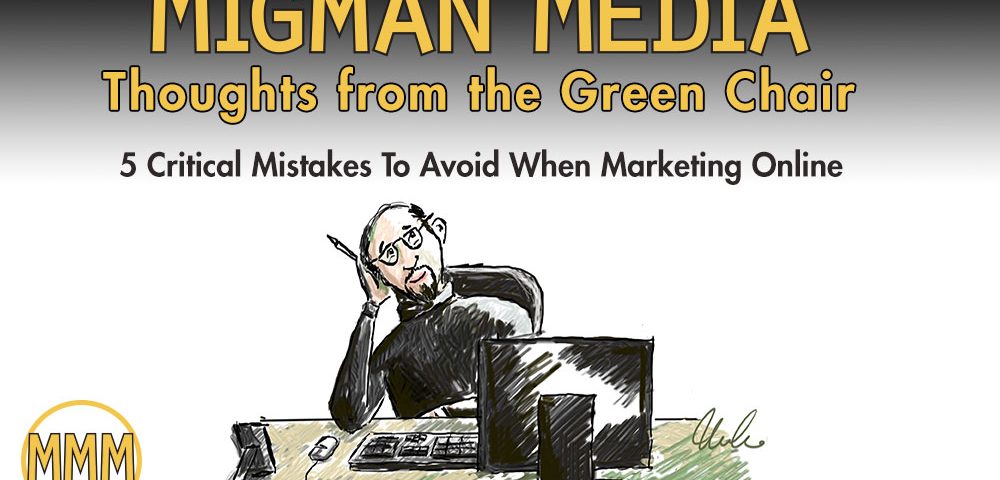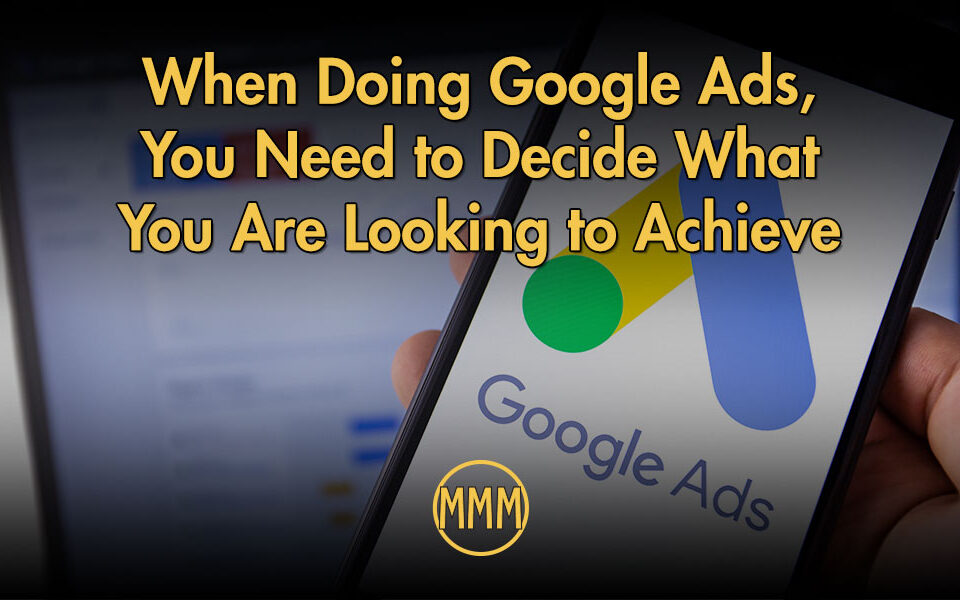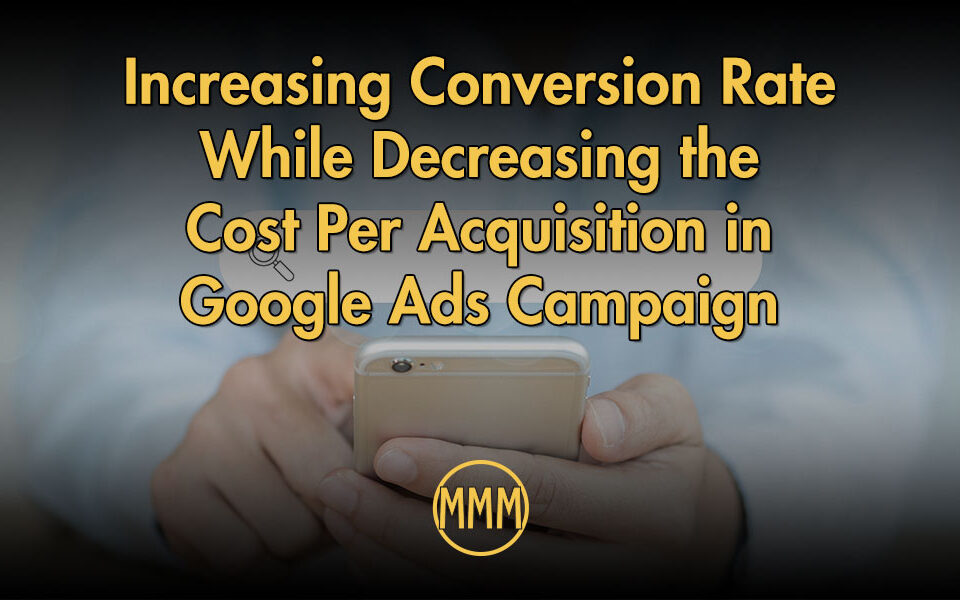
What Are The Best Ways To Identify Your Target Market?
September 9, 2019
3 Steps to Crafting a Message that Separates You From Your Competition
October 14, 2019Of course, there are more than 5 critical mistakes to avoid when marketing online. I wrote an article not too long ago that had ten others. I choose to put these together because these focus on learning about your customers and using that information to be more successful with your online marketing. Just something to keep in mind, when I say product, I mean product or service. These mistakes aren’t mutually exclusive to product marketing. Let’s get started with mistake number one.
1. Not determining whether your product is an aspirin or vitamin
What is the difference? An aspirin product is something like Crazy Glue or a service like Roto-Rooter. Basically, you need help quickly. A vitamin product is more like a Caribbean vacation (although some may argue that a Caribbean vacation is an aspirin, for my purposes, it’s a vitamin) or a Rolex watch. These are more discretionary purchases. So, why is this important? It determines how you market your product.
If you have an aspirin product, your marketing should center around speed, efficiency, and effectiveness. People are in the moment, and they want immediate relief. If you have a headache, you want an aspirin.
Inversely, if your product is a vitamin, you are marketing a state of mind or status. Sometimes the fear of missing outcomes into play. Overall, your message is about improving their lives or showing off status in some way.
You might be thinking, “Well, Mr. Smarty Pants, my product can be both a vitamin and an aspirin.” My response would be that you can’t be all things to all people. You should pick a side and run with it. If you try to be both, you are going to dilute the message. That doesn’t mean you can’t market both aspects. You have to do it separately. If you aren’t sure which type of product you are, you can ask your current customers. This leads me to the second critical mistake,
2. Not doing customer research
Why is customer research important? All your customers have similarities. Yes, if you are a divorce attorney, all your customers want a divorce. This goes beyond that. I’m talking about why they chose you over others who offer the same product or service.
By doing customer research, you learn about similarities in their state of mind when they decided to go with your company. What was it about your messaging or your service that appealed to them? You can learn things like where they searched for the service you provide. Remember that Google is not the end-all, be-all. There are plenty of other platforms like Facebook, Instagram, Pinterest, Snapchat, or Yelp, to name a few.
One thing to keep in mind is that you don’t want to go into customer research willy-nilly. You want to have a plan on what you want to learn and how you will go about learning it. There are a few ways to go about doing it. I’ll start at the top, and then we will dig into deeper learning.
Using Google Analytics or Facebook Analytics for customer research
Google Analytics or Facebook Analytics will give you information about the visitors to your website. They will provide breakdowns on age and gender, but they will also provide Affinity Categories as well. What are the Affinity Categories?
Affinity Categories are top-level interests like shopping, foodies, or entertainment. They also provide a further breakdown of these products, for example, shopping for shoes or furniture, or music entertainment or movies. I actually wrote an article that dives deeper into finding this information called, How Do I Find The Audience Demographics for My Website Using Google Analytics?
Using surveys for customer research
Surveying your customers is a great way to dig deeper. We all received those emails from businesses. They usually begin with “thank you for being our customer” and have a button or rate us from one to ten that starts the survey. They provide great information and a bit of insight into the mind of your customer.
Here are a couple of tips. First, don’t have more than 5 or 6 questions and make them multiple choice. I would also include one or two open-ended questions. Second, be careful not to include questions that can be answered “yes” or “no.” For example, don’t ask, “Is there anything else you would like to share with us” rather ask, “What did you enjoy the most about working with us?” They can’t answer “yes” or “no” to that type of question. They can choose not to answer, but that is another issue.
Using interviews for customer research
To dive even deeper, you can actually interview your customers. I usually recommend starting with a screener survey. You are looking for really jazzed people about your company, neutral people, and some that aren’t all that wild about you. This will give you a better range of answers. The reason you interview your customers is that you can ask follow up questions. Let me give you an example.
Let’s say you have a gentleman who prefers to use your 800 number over the online order form. You ask him why and you find out that he keeps his wallet on the other side of the house from where his computer is. Rather than walking back and forth, he goes to where his wallet and his credit card is located and uses his cell phone to call in the order, which he saved into his contacts.
At this point, you can ask him what would make him use the online form instead? You find out that if you stored his previous orders and his credit card information and he can reorder in a couple of clicks, he would use it more often. This type of information you would never find out without follow-up questions, which is something a survey cannot do effectively.
We talked a bit about using current customers. Let’s talk a bit about bringing in customers, which leads to the next mistake.
3. Betting the farm on SEO keywords and ignoring content
When you talk about bringing in customers, people think of search engine optimization or SEO. Here are a few issues with only focusing on keywords.
SEO is a cat and mouse game. Google updates their algorithm, and you make changes to your site. Google makes another update to their algorithm, and you make additional changes, but then Google says they want to roll back some of those changes, and you realize that you are chasing your tail.
People want to rank number one; however, if you take a good look at the results page when you search for something like “CPA Middletown,” you get ads at the top, a map with CPAs in your area, and then, way at the bottom, starts the organic results. Here’s something to keep in mind. More and more, Google is ranking based on search intent.
What does that mean? Think about this. If you and I search the term “Lincoln,” there can only be one top result. Is it the president? Is it the town? Is it the car? Google has to decide which will be the first result. They decide based on what they feel your intent of the search is. Meaning, our results may be different. I’m not discouraging you from optimizing for keywords, but rather I am suggesting that you also develop a content strategy.
Why is it important to have a content strategy?
A few things to keep in mind. Nearly a third of searches are over four words long, and nearly 8% of all searches are in the form of a question. What does this mean? People are looking for specific information. What is your customer looking for? It goes back to customer research.
What questions do they have? What problems are you solving for them? By asking the right questions, you can develop a myriad of topics to write about or put together videos about. Nearly half of the traffic to my site comes from people finding my blog posts online. Some of them are over three years old.
Our fourth mistake, again, addresses client acquisition. This is coming up more and more as both a ranking factor and as a way that people decide on your product or service, social proof.
4. Ignoring Social proof
What is social proof, and why is it important? Social proof is basically the culmination of what others are saying about you, and if these other people are saying it, then it must be true. I wrote an article about social proof and its importance in marketing that details it.
Something to keep in mind, Millennials and the generation coming up after it, Generation Z, are putting more value in what others are saying about your company than what you are saying about your company. This has given rise to a whole new way of marketing called influencer marketing.
Influencer marketing is having someone online with 100, 200, 500 thousand followers. They get paid to endorse or receive free products to endorse a product to their vast audience. It’s the new celebrity endorsement.
Social proof goes beyond testimonials on a page
Don’t get me wrong, testimonials are important, but I am talking more about independent reviews like Amazon. I am also talking about Google reviews and Facebook reviews. Think about this. If all things are equal, who are you choosing the company with no reviews or the one that has reviews? Remember, if others are saying your good, then you must be good.
5. Not segmenting your email list
The final mistake I want to talk about is segmenting your list. Do you have an email list? Let me ask you this when you send out an email blast do you send it to your whole list? By segmenting your email list, you can give you a better return on your investment.
How do you segment your list? There are plenty of ways. I wrote an article on how segmenting your email list can lead to better returns, which goes into more detail. Some simple ways include customers versus non-customers, frequent purchasers, infrequent purchasers, people who bought a specific product, and the list goes on. The idea is that you can deliver a targeted message to them that will increase open rates and increase click-throughs.
Bonus 6th Mistake: Giving up too early
When implementing a digital strategy, there’s a chance that it will not get the results you want right off the bat. My advice is to be patient and don’t throw the baby out with the bathwater on the first try. Learn what is not working and why.
With any strategy, whether it is successful or not, you should always be testing. Even if you repeat the same process, you may end up with different results. Why are you getting different results? What’s changed? I’m not suggesting that you stick with a failing campaign for six months. I’m suggesting make changes, test and make more changes. A set it and forget it approach will not give you the results you are looking for, and in the end, you could end up wasting money.




